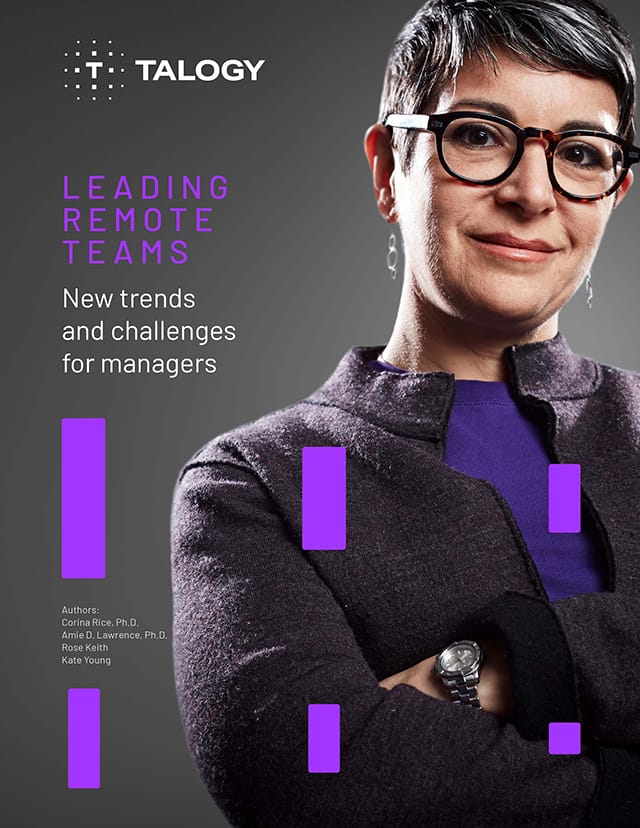Written by Amberlicia Anthony Thane, Consultant Analyst
Proximity bias became a hot topic recently and we have been considering the associated implications and advising on how to minimise its impact. As we see people slowly returning back to ‘normal,’ it is equally important to acknowledge that the future of work will never again be the same. There is no one-size-fits-all approach that can be universally applied from one organisation to another. The workplace will now consist of employees who exclusively work virtually, some on-site, and some hybrid.
While these varied ways of work choices offer a greater level of flexibility that many employees crave, there are some challenges that can arise. One of the biggest potential pitfalls of managing a team with different working arrangements – or even geographical locations – is the growing prevalence of proximity bias.
So, what is proximity bias?
Proximity bias is the idea that employees with close physical proximity to their company leaders will be perceived as better workers and ultimately find more success in the workplace than their remote counterparts. In sum, proximity bias is when leaders show preference toward employees who are in their immediate vicinity.
Why is it important to be aware of proximity bias?
It isn’t difficult to see how the trend of proximity bias originates. We tend to have a closer relationship with those we see regularly versus those that we only see occasionally. And while this is human nature, it is important that leaders become more aware of it.
One of the major pitfalls it can create is accidental favouritism just by the fact that one spends a lot more time with those in closer proximity. This can then lead to managers making decisions about hiring, performance, and promotion based on familiarity rather than objective criteria.
How does proximity bias effect remote employees?
If your work environment is composed of a mix of remote and hybrid/in-person employees, it has the potential to become a breeding ground for proximity bias. Such favoritism could lead to remote workers feeling disengaged, forgotten, and even to begin questioning their potential and career development in the organisation.
As such, the feeling of needing to be in the office more often in order to succeed can also cause anxiety for those who prefer working from home. While no leader ever wants their team members to feel undervalued, the current job climate where open positions are plentiful and job seekers are in short supply makes it all the more important to have engaged employees who feel appreciated in their role.
What are the steps organisations can take to avoid proximity bias?
Being aware of proximity bias and its effect on remote employees is crucial, and it is equally important to take action to minimise such behaviours within both teams and organisations.
Start with these three simple steps:
- Have conversations about proximity bias.
- Ensure equality when it comes to team meetings
- Establish and invest in a quantifiable merit system
The first step toward mitigating proximity bias and its negative impact is to have internal discussions with the executive teams about where bias may exist within the organisation. One example could be if there are managers/leaders that prefer meeting in person at the expense of being inclusive of remote workers. Recognising a behaviour like this would help the organisation to address it and help such leaders to recognise the importance of ensuring that remote and hybrid employees aren’t excluded or neglected. Mitigating these tendencies from the start would prevent them from spilling over into a larger issue down the line.
Some organisations have seen success taking an ‘all or nothing’ approach when it comes to team meetings. One way to do this is to have everyone join the meeting from their own device. This is a good way to hold each other accountable and it provides the same visibility to everyone. It will help to alleviate the possibility of feeling as if it’s an in-office team versus a remote team. It can also increase the feeling of belonging among the team, and as the saying goes, “nobody gets left behind.”
Having a structured and quantifiable system to measure and analyze an employee’s full impact across all areas. This is particularly helpful during performance reviews so that all employees are being measured by the same standards and competencies. Having this system in place would boost assurance that promotional and even hiring decisions made are fair and not the result of leadership rapport.
A holistic example of a good merit system could include a 360-degree review. This allows management to have a well-rounded view of every team member that highlights their accomplishments and contributions. Given the input of multiple colleagues including peers, managers, and direct reports, it’s a fair system that can help to reduce preferential treatment.



